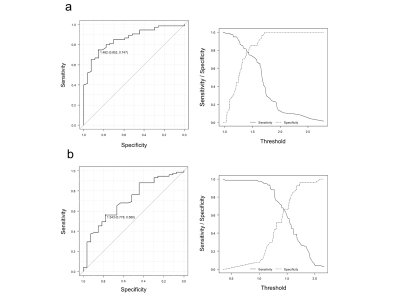Yasuo Takatsu1,2, Masafumi Nakamura3, Satoshi Kobayashi4, and Tosiaki Miyati4
1Department of Radiological Technology, Faculty of Health and Welfare, Tokushima Bunri University, Sanuki-city, Japan, 2Department of System Control Engineering, Graduate School of Engineering, Tokushima Bunri University, Sanuki-city, Japan, 3Department of Radiology, Otsu City Hospital, Otsu, Japan, 4Division of Health Sciences, Graduate School of Medical Sciences, Kanazawa University, Kanazawa, Japan
1Department of Radiological Technology, Faculty of Health and Welfare, Tokushima Bunri University, Sanuki-city, Japan, 2Department of System Control Engineering, Graduate School of Engineering, Tokushima Bunri University, Sanuki-city, Japan, 3Department of Radiology, Otsu City Hospital, Otsu, Japan, 4Division of Health Sciences, Graduate School of Medical Sciences, Kanazawa University, Kanazawa, Japan
The hepatobiliary
phase image using Gd–EOB–DTPA in the liver MRI is assessed by the
quantitative liver–spleen contrast ratio (Q-LSC) , the cutoff value at which
tumors can be easily determined is 1.5. However, Q-LSC is found unsuitable for
cases of splenectomy and when there is splenic deposition of Gamna–Gandy
bodies. Therefore, the quantitative liver-portal vein contrast ratio (Q-LPC) is
useful instead of Q-LSC. The cutoff value of Q-LPC was at 1.462, the
sensitivity and the specificity were higher than Q-LSC at the cutoff value. Q-LPC
cutoff value can be used for hepatobiliary phase MR image evaluation.

